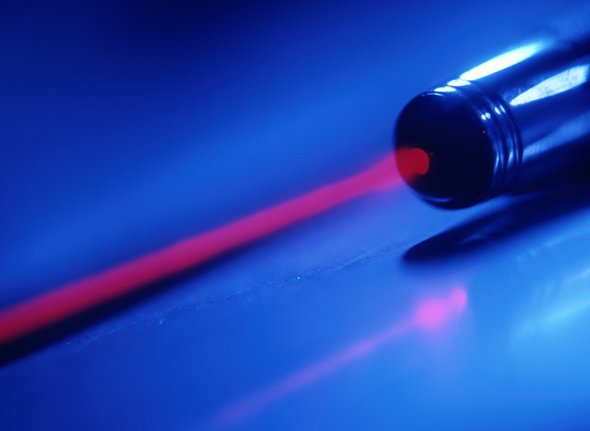(单词翻译:单击)
听力文本
This is Scientific American — 60-Second Science. I'm Steve Mirsky.
"The main practical application of CPA so far has been in the eye surgery. But it was the first one, and I think it is the one that is used by the most people for something practical."
Donna Strickland on the phone this morning with Goran Hansson of the Nobel Assembly at the Karolinska Institute, after learning that she had shared the Nobel Prize in Physics. CPA is chirped pulse amplification, a technique for producing incredibly short pulses of laser light of very high intensity.
A few minutes before talking with Strickland, Hansson made the announcement:
"This year's prize is about tools made from light. The Royal Swedish Academy of Sciences has today decided to award the 2018 Nobel Prize in Physics with one half to Arthur Ashkin for the optical tweezers and their application to biological systems and the other half jointly to Gérard Mourou and Donna Strickland for their method of generating high-intensity, ultrashort optical pulses."

"Arthur Ashkin was born in 1922 in New York City. He made his remarkable invention at the Bell Laboratories in New Jersey in the United States. Gérard Mourou was born in 1944 in Albertville in France. And he's currently at the école Polytechnique in Palaiseau in France, and also affiliated with the University of Michigan in the United States."
"Donna Strickland was born in 1959 in Guelph, Ontario, Canada, and she's currently at the University of Waterloo in Canada. Drs. Mourou and Strickland did much of their groundbreaking work together at the University of Rochester in the United States."
Physicist Olga Bottner, chair of the Nobel Committee for Physics, added:
"Today we celebrate two inventions within the field of laser physics that have opened new scientific vistas. But what's more, have already led to applications of direct benefit to society. Optical tweezers allowing control of tiny living organisms. And an amplification technique enabling construction of high-intensity compact laser systems."
For an in-depth listen about the 2018 Nobel Prize in Physics, look for the Scientific American Science Talk podcast later today.
For Scientific American — 60-Second Science. I'm Steve Mirsky.
参考译文
这里是科学美国人——60秒科学。我是史蒂夫·米尔斯基。
“迄今为止,啁啾脉冲放大技术(简称CPA)主要实际应用于眼部外科手术中。但我认为这是首个大多数人可实际应用的技术。”
今天上午,在得知自己与他人共同获得诺贝尔物理学奖之后,唐娜·斯特里克兰德与卡罗林斯卡学院诺贝尔奖大会的戈兰·汉森通了电话。CPA指啁啾脉冲放大技术,是一种产生超短超强激光脉冲的技术。
在与斯特里克兰德通话的几分钟之前,汉森宣布了获奖结果。
“今年的奖项与一种用光制作的工具有关。今天,瑞典皇家科学院决定将2018年诺贝尔物理学奖的一半授予阿瑟·阿什金,以表彰其所发明的光镊技术,并将此技术应用于生物体系;另一半共同授予热拉尔·穆鲁和唐娜·斯特里克兰,以表彰他们提出了制造高强度、超短波脉冲激光的方法。”
“阿瑟·阿什金1952年出生于纽约市。他在美国新泽西州的贝尔实验室完成了他非凡卓越的发明。热拉尔·穆鲁1944年出生于法国阿尔贝维尔。他目前在法国帕莱索的巴黎综合理工大学工作,同时也为美国密歇根大学效力。”
“唐娜·斯特里克兰德1959年出生于加拿大安大略省圭尔夫市,目前在加拿大滑铁卢大学任职。穆鲁博士和斯特里克兰德博士共同在美国罗切斯特大学完成了大部分开创性工作。”
诺贝尔物理学奖委员会主席、物理学家奥尔加·博特纳补充道:
“今天,我们庆祝激光物理学领域的两项发明,它们开启了新的科学前景。但更重要的是,这两项发明已经转化为直接造福社会的应用。光学镊子让我们可以控制微小的生物。而啁啾脉冲放大技术则使我们能构建高强度紧凑型激光系统。”
若想深入了解2018年诺贝尔物理学奖,请收看今天晚些时候播出的科学美国人《科学对话》播客。
谢谢大家收听科学美国人——60秒科学。我是史蒂夫·米尔斯基。
译文为可可英语翻译,未经授权请勿转载!
重点讲解
重点讲解:
1. so far 迄今为止;到目前为止;
So far they have not found a way to fight the virus.
迄今为止,他们还没有找到一种对抗该病毒的方法。
2. decide to do sth. 决定,拿定主意(做);
I'll engage for John's behaviour should you decide to employ him.
如果你决定聘用约翰,我愿为他的行为担保。
3. what's more 更有甚者;更为重要的是;此外;
You should remember it, and what's more, you should get it right.
你应该记住它,更重要的是,应该正确理解它。
4. lead to 招致;致使;导致;
The improper use of medicine could lead to severe adverse reactions.
用药不当会产生严重的不良反应。


